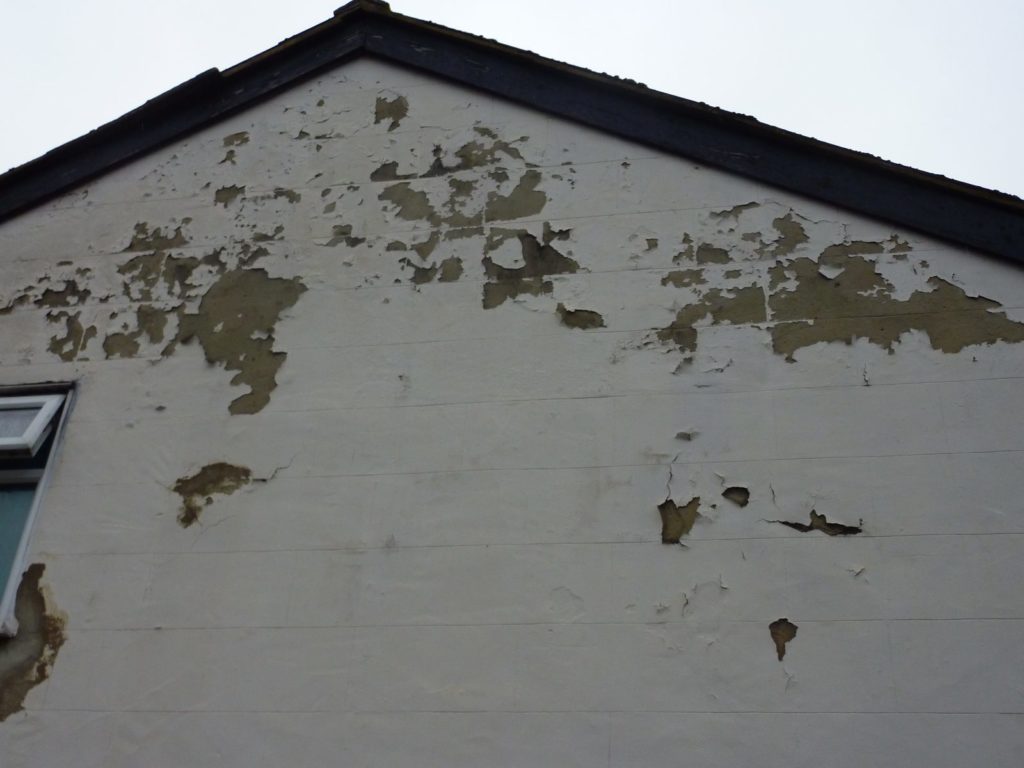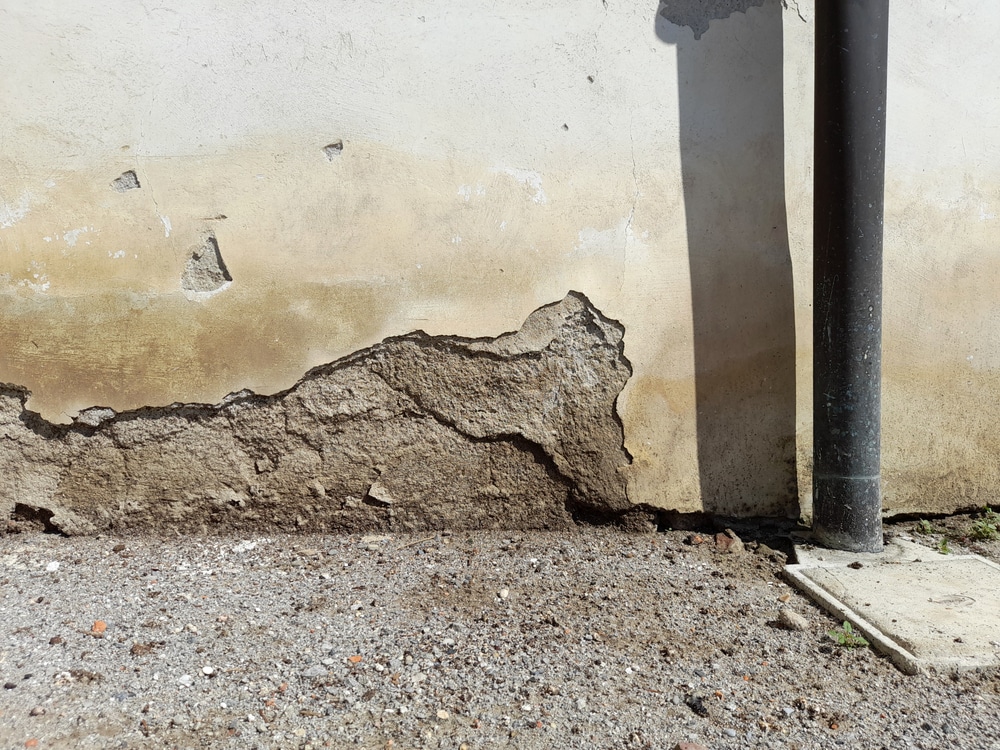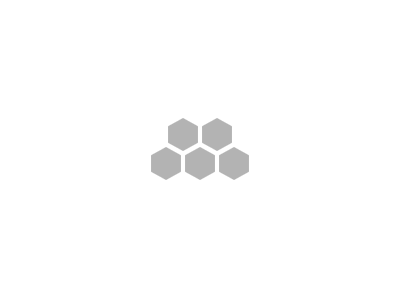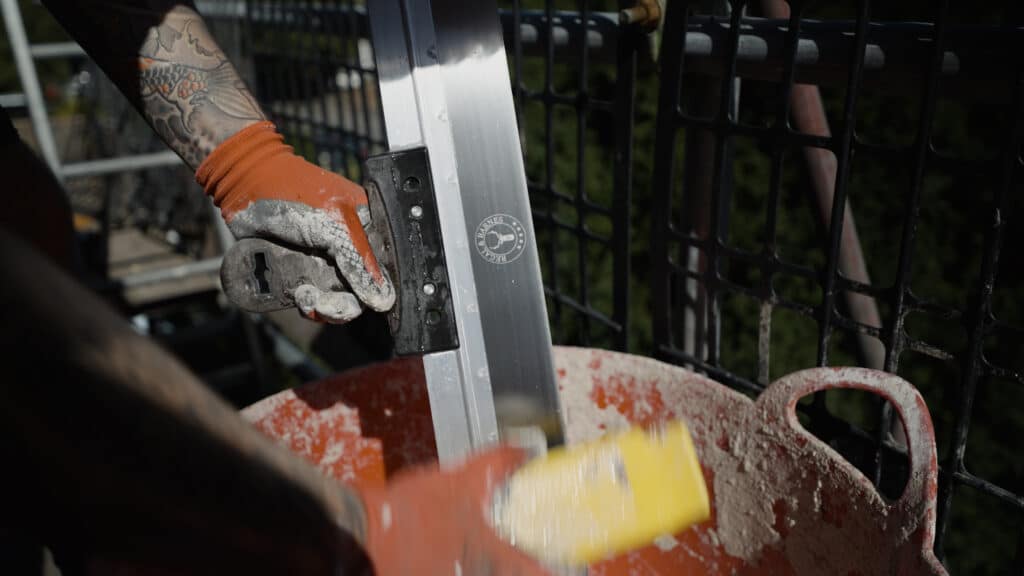What Problems Can Rain Cause During Installation?
Installing external wall insulation and render systems are fundamental aspects of constructing buildings that are energy-efficient, resilient, and compliant with modern building standards. These installations are paramount for protecting buildings from environmental elements, reducing energy consumption, and maintaining internal temperatures. However, the installation process can be incredibly intricate and, when performed under suboptimal conditions such as rain, it may lead to multiple complications and challenges.
Rain, particularly persistent or heavy rain, can adversely affect the installation procedure, compromising the efficacy and longevity of the insulation and render systems. The presence of moisture can not only hinder the adhesion of the materials to the wall surfaces but can also introduce a range of other complications like structural damage, material wastage, and delays, which can escalate the overall costs and reduce the performance of the insulation and render systems.
This article will explore the specific problems that rain can cause during the installation of external wall insulation and render systems and will also discuss some mitigation strategies to address these challenges effectively. Whether you are a homeowner, a contractor, or a construction manager, understanding these challenges can help ensure that the installation process is smooth and efficient, and results in a robust and durable external wall system.
Compromised adhesion
Adhesion is a critical factor when installing external wall insulation and render systems. It ensures that the materials bond effectively to the wall surfaces, providing stability, longevity, and optimal performance. However, the presence of rain can severely compromise this adhesion, leading to a range of problems and potential failures of the system.
Impact of rainwater
Rainwater, by penetrating the material or lingering on the surface, can interfere with the bonding process of the adhesive materials used in the installation. The moisture can prevent the materials from setting properly, resulting in weak, ineffective, or unstable bonds. This compromised adhesion can lead to the detachment or failure of the insulation and render systems over time, exposing the building to environmental elements and reducing its energy efficiency.
Material dilution
Water from rain can dilute adhesive materials, reducing their viscosity and adhesive properties. This dilution can prevent the materials from adhering properly to the surfaces, necessitating additional applications or adjustments and potentially leading to failures in the insulation and render systems.
Surface preparation difficulties
Rain complicates the preparation of wall surfaces for installation. Ideal surface preparation requires clean and dry surfaces, free of contaminants. Rain not only wets the surfaces but can also introduce dirt, dust, and other contaminants to the wall, affecting the adhesion of the materials and potentially reducing the longevity and effectiveness of the insulation and render systems.
Microbial growth
The moisture introduced by rain can encourage the growth of mould, mildew, and other microbes between the wall and the insulation and render systems. This microbial growth can compromise the adhesion, deteriorate the materials, and pose health risks to the building occupants.
Delayed setting and curing
The setting and curing phase is critical in the installation of external wall insulation and render systems. It allows materials to harden and gain their full strength, ensuring optimal performance and longevity of the system. However, rain can significantly impede this process, leading to delays and compromises in the structural integrity of the applied materials.
Impact on material properties
When materials do not have adequate conditions to set and cure, they cannot develop the required properties, such as strength and adhesion, to function effectively. Rain introduces excess moisture, preventing materials from hardening and reaching their optimal state. This can lead to weakened structural integrity and can make the insulation and render systems more susceptible to damage and wear.
Extension of project timelines
Rain-induced delays in setting and curing can extend project timelines significantly. Extended exposure to rain can require additional days for the materials to dry and cure properly, leading to prolonged construction periods, increased labour costs, and potential contractual penalties.
Impaired aesthetic finish
Rain can also impact the aesthetic finish of the render systems. The extended setting and curing period can result in uneven textures, discolourations, and other surface imperfections, affecting the overall appearance and requiring additional work and resources for correction.

Risk of system failure
The inability of materials to set and cure properly can increase the risk of system failure. Ineffective curing may lead to inadequate bonding, reduced strength, and decreased durability, ultimately impacting the performance and lifespan of the insulation and render systems.
Water ingress
In the context of installing external wall insulation and render systems, water infiltration is a critical concern, particularly during rainy conditions. The penetration of rainwater through gaps, seams, or imperfections in the installation can have deleterious effects on both the insulation system and the building’s structural components, leading to myriad issues ranging from structural damage to health risks for occupants.
Structural degradation
Water infiltration can lead to the deterioration of the building’s structural elements, including wood, steel, and concrete. Prolonged exposure to moisture can cause rot in wooden structures, corrosion in steel, and spalling in concrete, compromising the building’s stability and integrity over time.
Dampness and mould growth
Once water infiltrates the insulation and renders systems, it can create damp conditions conducive to mould and mildew growth. These fungi can degrade the materials, reduce the insulation effectiveness, and pose serious health risks, including respiratory problems and allergic reactions, to the occupants.

Insulation material degradation
Many insulation materials are susceptible to water damage. Water infiltration can reduce the thermal resistance (R-value) of insulation materials, diminishing their effectiveness in maintaining internal temperatures and increasing energy consumption in the building.
Increased repair and maintenance costs
The damage caused by water infiltration often necessitates extensive repairs and maintenance, involving the replacement of damaged materials and rectification of affected areas. This can translate to high costs and considerable inconvenience to building owners and occupants.
Surface contamination
Surface contamination is a substantial concern during the installation of external wall insulation and render systems in rainy conditions. Rainwater can carry diverse contaminants, such as dirt, dust, algae, and pollutants, which can adhere to the wall surfaces, impacting the quality and effectiveness of the installation and leading to potential aesthetic and functional complications.
Impact on adhesion
Contaminants on wall surfaces can impede the adhesion of insulation materials and renders, potentially leading to weak bonds and decreased structural stability. This compromised adhesion can affect the overall performance and longevity of the insulation and render systems, leading to potential failures and increased maintenance needs.
Aesthetic complications
Surface contaminants can impair the aesthetic finish of the render systems, causing discolourations, uneven textures, and other imperfections. Correcting these aesthetic issues can be labour-intensive and costly, requiring additional applications, treatments, or even system removal and reinstallation in severe cases.
Reduction in material efficiency
The efficiency of insulation materials and render systems can be diminished by contaminants, impacting their thermal resistance and protective properties. This can lead to increased energy consumption and decreased protection against environmental elements, compromising the comfort and safety of building occupants.
Increased installation time and cost
Dealing with surface contamination often requires additional cleaning, preparation, and correction steps, prolonging installation times and increasing labour and material costs. These additional steps can impact project timelines and budgets, leading to potential disputes and dissatisfaction among stakeholders.
Work interruptions
When installing external wall insulation and render systems, the advent of rain can lead to considerable work interruptions. These disruptions can have multifaceted repercussions, influencing project timelines, workflow efficiency, and overall installation quality. Understanding the impact of these work interruptions and managing them effectively is crucial to maintaining the progress and standards of the project.
Impact on project timelines
Work interruptions due to rain can significantly extend the installation timelines. Every interruption necessitates a halt in work, reorganisation of schedules, and, often, waiting periods for suitable weather conditions to resume work. This can lead to delayed project completions and can have cascading effects on other interconnected tasks and overall project timelines.
Increased labour costs
Interruptions lead to an idle time where the workforce is unable to proceed with the installations, but labour costs continue to accrue. This inefficiency translates to increased labour costs and can strain the project’s budget, potentially leading to conflicts between contractors and clients over escalated costs.
Compromised installation quality
Frequent starts and stops due to rain interruptions can compromise the quality of installation. Rushed work in an attempt to beat the rain, or resumption of work on surfaces affected by rain, can lead to mistakes, inconsistencies, and oversights, affecting the structural integrity and performance of the installed systems.
Reduced work efficiency
Rain and adverse weather conditions can markedly reduce work efficiency during the installation of external wall insulation and render systems. The implications of reduced efficiency are manifold, affecting the speed, quality, and cost of the installation process, and necessitating strategic interventions to mitigate the adverse impacts.
Impaired mobility and productivity
Rain can create hazardous working conditions, with slippery surfaces increasing the risk of accidents and impairing the mobility of workers. This can slow down the installation process as workers need to move more cautiously, leading to decreased productivity and extended timelines.
Material handling complications
Handling and applying materials in the rain can be challenging, with an increased risk of material wastage, contamination, and improper application. This can necessitate additional time and resources to correct errors and replace wasted materials, further reducing overall work efficiency.
Tool and equipment constraints
The efficiency of tools and equipment can be compromised in wet conditions. Rain can interfere with the operation of electrical equipment, and moisture can affect the calibration and functioning of precision tools, potentially leading to inaccuracies and delays in installation.
Material wastage
The installation of external wall insulation and render systems requires precision and care, particularly in managing materials. Rain can exacerbate the risk of material wastage, which can have significant financial implications and can also affect the quality and timeline of the installation project.
Exposure to elements
Materials such as insulation foam and render can be severely damaged by exposure to rain. When exposed to moisture, these materials can swell, deform, or lose their adhesive properties, becoming unsuitable for application and leading to unnecessary wastage.
Contamination
Rainwater can carry a variety of contaminants such as dirt, dust, and debris, which can compromise the integrity of the materials. Contaminated materials might not adhere properly, can exhibit uneven textures, and can impact the aesthetic and functional quality of the finished project, often necessitating removal and replacement.
Handling and application difficulties
Wet conditions can make the handling and application of materials more challenging, leading to spillage, uneven application, and other mistakes that result in material wastage. Correcting these issues can be time-consuming and can increase material and labour costs.
Increased costs and delays
Material wastage due to rain leads to increased project costs as wasted materials need to be replaced, and additional labour is required to rectify errors. Moreover, the time taken to reorder and replace materials can cause significant delays in project timelines.
Mitigation Strategies
Despite these challenges, several strategies can mitigate the impact of rain during installation:
- Scheduling: Plan the installation during a period with a favourable weather forecast, avoiding times with high probabilities of rain.
- Temporary Shelters: Erecting temporary shelters or covers can protect the work area from rain, allowing for continuous work even during unfavourable weather.
- Proper Sealing: Ensure all seams, joints, and openings are properly sealed to prevent water ingress during and after installation.
- Surface Preparation: Thoroughly cleaning and drying surfaces before installation can help in achieving strong adhesion and reducing contamination.
- Moisture Resistant Materials: Use materials and products that are designed to resist moisture and can set and cure effectively in damp conditions.
Facebook
Twitter
LinkedIn
Your cart
Trade Account Login

We use cookies on our website to give you the most relevant experience by remembering your preferences and repeat visits. By clicking “Accept All”, you consent to the use of ALL the cookies. However, you may visit "Cookie Settings" to provide personalised consent.
Manage consent
Privacy Overview
This website uses cookies to improve your experience while you navigate through the website. Out of these, the cookies that are categorized as necessary are stored on your browser as they are essential for the working of basic functionalities of the website. We also use third-party cookies that help us analyze and understand how you use this website. These cookies will be stored in your browser only with your consent. You also have the option to opt-out of these cookies. But opting out of some of these cookies may affect your browsing experience.
Necessary cookies are absolutely essential for the website to function properly. These cookies ensure basic functionalities and security features of the website, anonymously.
| Cookie | Duration | Description |
|---|---|---|
| __stripe_mid | 1 year | This cookie is set by Stripe payment gateway. This cookie is used to enable payment on the website without storing any patment information on a server. |
| __stripe_sid | 30 minutes | This cookie is set by Stripe payment gateway. This cookie is used to enable payment on the website without storing any patment information on a server. |
| _GRECAPTCHA | 5 months 27 days | This cookie is set by the Google recaptcha service to identify bots to protect the website against malicious spam attacks. |
| apbct_cookies_test | session | CleanTalk sets this cookie to prevent spam on comments and forms and act as a complete anti-spam solution and firewall for the site. |
| apbct_page_hits | session | CleanTalk sets this cookie to prevent spam on comments and forms and act as a complete anti-spam solution and firewall for the site. |
| apbct_prev_referer | session | Functional cookie placed by CleanTalk Spam Protect to store referring IDs and prevent unauthorized spam from being sent from the website. |
| apbct_site_landing_ts | session | CleanTalk sets this cookie to prevent spam on comments and forms and act as a complete anti-spam solution and firewall for the site. |
| apbct_site_referer | 3 days | This cookie is placed by CleanTalk Spam Protect to prevent spam and to store the referrer page address which led the user to the website. |
| apbct_timestamp | session | CleanTalk sets this cookie to prevent spam on comments and forms and act as a complete anti-spam solution and firewall for the site. |
| apbct_urls | 3 days | This cookie is placed by CleanTalk Spam Protect to prevent spam and to store the addresses (urls) visited on the website. |
| AWSALBCORS | 7 days | This cookie is managed by Amazon Web Services and is used for load balancing. |
| cookielawinfo-checkbox-advertisement | 1 year | Set by the GDPR Cookie Consent plugin, this cookie is used to record the user consent for the cookies in the "Advertisement" category . |
| cookielawinfo-checkbox-analytics | 11 months | This cookie is set by GDPR Cookie Consent plugin. The cookie is used to store the user consent for the cookies in the category "Analytics". |
| cookielawinfo-checkbox-functional | 11 months | The cookie is set by GDPR cookie consent to record the user consent for the cookies in the category "Functional". |
| cookielawinfo-checkbox-necessary | 11 months | This cookie is set by GDPR Cookie Consent plugin. The cookies is used to store the user consent for the cookies in the category "Necessary". |
| cookielawinfo-checkbox-others | 11 months | This cookie is set by GDPR Cookie Consent plugin. The cookie is used to store the user consent for the cookies in the category "Other. |
| cookielawinfo-checkbox-performance | 11 months | This cookie is set by GDPR Cookie Consent plugin. The cookie is used to store the user consent for the cookies in the category "Performance". |
| ct_checkjs | session | CleanTalk–Used to prevent spam on our comments and forms and acts as a complete anti-spam solution and firewall for this site. |
| ct_fkp_timestamp | session | CleanTalk sets this cookie to prevent spam on the site's comments/forms, and to act as a complete anti-spam solution and firewall for the site. |
| ct_pointer_data | session | CleanTalk sets this cookie to prevent spam on the site's comments/forms, and to act as a complete anti-spam solution and firewall for the site. |
| ct_ps_timestamp | session | CleanTalk sets this cookie to prevent spam on the site's comments/forms, and to act as a complete anti-spam solution and firewall for the site. |
| ct_sfw_pass_key | 1 month | CleanTalk sets this cookie to prevent spam on comments and forms and act as a complete anti-spam solution and firewall for the site. |
| ct_timezone | session | CleanTalk–Used to prevent spam on our comments and forms and acts as a complete anti-spam solution and firewall for this site. |
| elementor | never | This cookie is used by the website's WordPress theme. It allows the website owner to implement or change the website's content in real-time. |
| viewed_cookie_policy | 11 months | The cookie is set by the GDPR Cookie Consent plugin and is used to store whether or not user has consented to the use of cookies. It does not store any personal data. |
Functional cookies help to perform certain functionalities like sharing the content of the website on social media platforms, collect feedbacks, and other third-party features.
| Cookie | Duration | Description |
|---|---|---|
| __zlcmid | 1 year | This cookie is used by Zendesk live chat and is used to store the live chat ID. |
| bcookie | 2 years | LinkedIn sets this cookie from LinkedIn share buttons and ad tags to recognize browser ID. |
| bscookie | 2 years | LinkedIn sets this cookie to store performed actions on the website. |
| lang | session | LinkedIn sets this cookie to remember a user's language setting. |
| lidc | 1 day | LinkedIn sets the lidc cookie to facilitate data center selection. |
| UserMatchHistory | 1 month | LinkedIn sets this cookie for LinkedIn Ads ID syncing. |
Performance cookies are used to understand and analyze the key performance indexes of the website which helps in delivering a better user experience for the visitors.
| Cookie | Duration | Description |
|---|---|---|
| __utma | 2 years | This cookie is set by Google Analytics and is used to distinguish users and sessions. The cookie is created when the JavaScript library executes and there are no existing __utma cookies. The cookie is updated every time data is sent to Google Analytics. |
| __utmb | 30 minutes | Google Analytics sets this cookie, to determine new sessions/visits. __utmb cookie is created when the JavaScript library executes and there are no existing __utma cookies. It is updated every time data is sent to Google Analytics. |
| __utmc | session | The cookie is set by Google Analytics and is deleted when the user closes the browser. It is used to enable interoperability with urchin.js, which is an older version of Google Analytics and is used in conjunction with the __utmb cookie to determine new sessions/visits. |
| __utmt | 10 minutes | Google Analytics sets this cookie to inhibit request rate. |
| __utmv | 2 years | The __utmv cookie is set on the user's device, to enable Google Analytics to classify the visitor. |
| __utmz | 6 months | Google Analytics sets this cookie to store the traffic source or campaign by which the visitor reached the site. |
| sib_cuid | 6 months | Purechat uses this cookie to send data to purechat.com, to connect visitors to the reservation team and track visitors to stay on portal. |
| SRM_B | 1 year 24 days | Used by Microsoft Advertising as a unique ID for visitors. |
Analytical cookies are used to understand how visitors interact with the website. These cookies help provide information on metrics the number of visitors, bounce rate, traffic source, etc.
| Cookie | Duration | Description |
|---|---|---|
| _ga | 2 years | The _ga cookie, installed by Google Analytics, calculates visitor, session and campaign data and also keeps track of site usage for the site's analytics report. The cookie stores information anonymously and assigns a randomly generated number to recognize unique visitors. |
| _gat_gtag_UA_61069204_2 | 1 minute | Set by Google to distinguish users. |
| _gat_UA-61069204-2 | 1 minute | A variation of the _gat cookie set by Google Analytics and Google Tag Manager to allow website owners to track visitor behaviour and measure site performance. The pattern element in the name contains the unique identity number of the account or website it relates to. |
| _gcl_au | 3 months | Provided by Google Tag Manager to experiment advertisement efficiency of websites using their services. |
| _gid | 1 day | Installed by Google Analytics, _gid cookie stores information on how visitors use a website, while also creating an analytics report of the website's performance. Some of the data that are collected include the number of visitors, their source, and the pages they visit anonymously. |
| _uetsid | 1 day | This cookies are used to collect analytical information about how visitors use the website. This information is used to compile report and improve site. |
| CONSENT | 2 years | YouTube sets this cookie via embedded youtube-videos and registers anonymous statistical data. |
Advertisement cookies are used to provide visitors with relevant ads and marketing campaigns. These cookies track visitors across websites and collect information to provide customized ads.
| Cookie | Duration | Description |
|---|---|---|
| _fbp | 3 months | This cookie is set by Facebook to display advertisements when either on Facebook or on a digital platform powered by Facebook advertising, after visiting the website. |
| ANONCHK | 10 minutes | The ANONCHK cookie, set by Bing, is used to store a user's session ID and also verify the clicks from ads on the Bing search engine. The cookie helps in reporting and personalization as well. |
| fr | 3 months | Facebook sets this cookie to show relevant advertisements to users by tracking user behaviour across the web, on sites that have Facebook pixel or Facebook social plugin. |
| MUID | 1 year 24 days | Bing sets this cookie to recognize unique web browsers visiting Microsoft sites. This cookie is used for advertising, site analytics, and other operations. |
| NID | 6 months | NID cookie, set by Google, is used for advertising purposes; to limit the number of times the user sees an ad, to mute unwanted ads, and to measure the effectiveness of ads. |
| test_cookie | 15 minutes | The test_cookie is set by doubleclick.net and is used to determine if the user's browser supports cookies. |
| uuid | 6 months | MediaMath sets this cookie to avoid the same ads from being shown repeatedly and for relevant advertising. |
| VISITOR_INFO1_LIVE | 5 months 27 days | A cookie set by YouTube to measure bandwidth that determines whether the user gets the new or old player interface. |
| YSC | session | YSC cookie is set by Youtube and is used to track the views of embedded videos on Youtube pages. |
| yt-remote-connected-devices | never | YouTube sets this cookie to store the video preferences of the user using embedded YouTube video. |
| yt-remote-device-id | never | YouTube sets this cookie to store the video preferences of the user using embedded YouTube video. |
| yt.innertube::nextId | never | This cookie, set by YouTube, registers a unique ID to store data on what videos from YouTube the user has seen. |
| yt.innertube::requests | never | This cookie, set by YouTube, registers a unique ID to store data on what videos from YouTube the user has seen. |
Other uncategorized cookies are those that are being analyzed and have not been classified into a category as yet.
| Cookie | Duration | Description |
|---|---|---|
| _clck | 1 year | No description |
| _clsk | 1 day | No description |
| _uetvid | 1 year 24 days | No description available. |
| AnalyticsSyncHistory | 1 month | No description |
| apbct_pixel_url | session | No description |
| apbct_visible_fields_0 | session | No description |
| apbct_visible_fields_1 | session | No description |
| apbct_visible_fields_10 | session | No description |
| apbct_visible_fields_2 | session | No description |
| apbct_visible_fields_3 | session | No description |
| apbct_visible_fields_4 | session | No description |
| apbct_visible_fields_5 | session | No description |
| apbct_visible_fields_6 | session | No description |
| apbct_visible_fields_7 | session | No description |
| apbct_visible_fields_8 | session | No description |
| apbct_visible_fields_9 | session | No description |
| ct_checked_emails | session | No description |
| ct_has_scrolled | session | No description |
| ct_mouse_moved | session | No description |
| ct_screen_info | session | No description |
| ictf_master | never | No description available. |
| li_gc | 2 years | No description |
| m | 2 years | No description available. |
| SM | session | No description available. |
| testinfinitycookie | session | No description |
| woocommerce_show_tax | 7 days | No description available. |
| wp_woocommerce_session_c5ac76b408021294cb56bcc27eddf8a1 | 2 days | No description |


